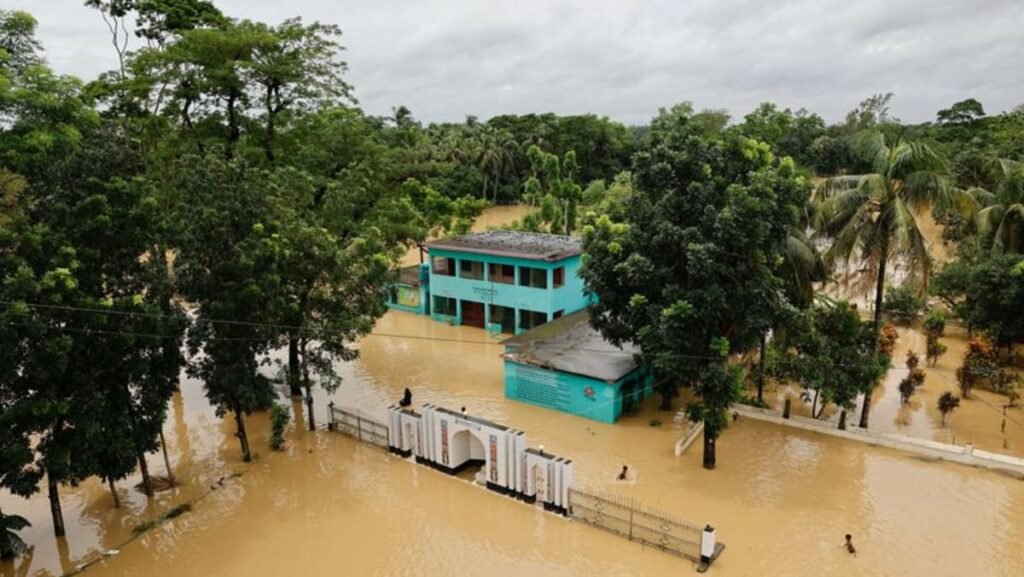Devastating floods triggered by heavy rains and upstream torrents have led to the deaths of at least five people and stranded over 100,000 individuals in northern Bangladesh. One of the hardest-hit districts is Sherpur, where major rivers have overflowed, submerging new areas and displacing thousands of families. The floods have caused extensive damage to agriculture, particularly rice fields, and many homes and roads are underwater, isolating villages and leaving residents in urgent need of rescue.
Army personnel are assisting in rescue efforts by using boats and helicopters to deliver emergency supplies and evacuate those trapped by the floods. However, collapsed bridges and submerged roads are making it challenging for local authorities to reach the affected areas. The main focus is on evacuating people to safe shelters and providing them with essential supplies to ensure their well-being during this crisis.
The vulnerability of Bangladesh to climate change is highlighted by the multiple floods the country has experienced this year. Scientists warn that the risk of river flooding is worsening due to global climate change, with as many as 3.5 million people in Bangladesh at risk annually. As water levels continue to rise, concerns are mounting about the long-term impact on agriculture, especially rice crops. If the floodwaters do not recede soon, farmers in the region could face severe economic losses.
The weather office has forecasted more rain in the coming days, raising fears of further inundation and worsening conditions for those already affected by the floods. In August, floods in eastern Bangladesh claimed over 70 lives and caused an estimated US$1.20 billion in damage, according to a study by the Centre for Policy Dialogue. In response to the ongoing floods and cyclones in the country, the United Nations and its partners have launched a US$134 million humanitarian appeal to provide urgent relief and support to affected communities.
The situation in Bangladesh remains critical as the floods continue to ravage northern areas, displacing thousands of families and causing significant damage to agriculture and infrastructure. Local authorities are working tirelessly to evacuate people to safety and provide them with essential supplies. With more rain in the forecast, concerns about the long-term impact on agriculture and the economy are growing. The international community has stepped in with humanitarian aid to assist those affected by the floods and cyclones, underscoring the urgent need for support in the face of this ongoing crisis in Bangladesh.











